Morocco
An earthquake has sown destruction and devastation in Morocco, where death and injury counts continue to rise after rescue crews dug out people both alive and dead in villages that were reduced to rubble.
Law enforcement and aid workers — both Moroccan and international — have arrived in the region south of the city of Marrakech that was hardest hit by the magnitude 6.8 tremor Friday night, along with several aftershocks.
Residents in most places have been provided food and water, and most of the giant boulders blocking steep mountain roads have been cleared. But worries remain about shelter and long-term recovery efforts in impoverished mountain regions hardest hit.
Here's what you need to know:
WHAT ARE THE AREAS MOST AFFECTED?
The epicenter was high in the Atlas Mountains, about 70 kilometers (44 miles) south of Marrakech in Al Haouz province.
The region is largely rural — made up of red-rock mountains, picturesque gorges and glistening streams and lakes.
The earthquake shook most of Morocco and caused injury and death in other provinces, including Marrakech, Taroudant and Chichaoua.
WHO WAS AFFECTED?
Of the 2,946 deaths reported as of Wednesday, 1,684 were in Al Haouz, a region with a population of around 570,000, according to Morocco's 2014 census.
In certain villages such as Tafeghaghte, residents say more than half the population died. The United Nations has estimated that 300,000 people were affected by Friday night's temblor.
People speak a combination of Arabic and Tachelhit, Morocco's most common Indigenous language. Villages of clay and mud brick built into mountainsides have been destroyed.
Most of the dead have already been buried. The government reports 2,501 injuries.
WHO IS PROVIDING AID?
Morocco has deployed ambulances, rescue crews and soldiers to the region to help assist with emergency response efforts.
Aid groups said the government hasn't made a broad appeal for help and accepted only limited foreign assistance.
The Interior Ministry said that it was accepting search and rescue-focused international aid from nongovernmental organizations as well as Spain, Qatar, the U.K. and the United Arab Emirates, bypassing offers from French President Emmanuel Macron and U.S. President Joe Biden.
The Moroccan government said that poorly coordinated aid "would be counterproductive," to the frustration of rescue teams.
HOW CAN PEOPLE HELP?
Experts say the most direct way to provide aid to those affected in the city of Marrakech and the rural areas in the Atlas Mountains is to donate to organizations that have operations already on the ground.
That includes the International Federation of Red Cross and Red Crescent Societies, which quickly released $1.1 million from its Disaster Response Emergency Fund to support Moroccan Red Crescent relief efforts in the country.
It also includes World Central Kitchen, Doctors Without Borders, and GlobalGiving, which created a Morocco Earthquake Relief Fund and had raised more than $500,000 as of Tuesday morning.
WHY ARE MARRAKECH AND THE REGION HISTORIC?
The earthquake cracked and crumbled parts of the walls that surround Marrakech's old city, a UNESCO World Heritage site built in the 12th century.
Videos showed dust emanating from parts of the Koutoubia Mosque, one of the city's best-known historic sites. The city is Morocco's most widely visited destination, known for its palaces, spice markets, madrasas and Jemaa El Fna — its noisy square full of food vendors and musicians.
The earthquake also wreaked havoc on significant historical sites in the High Atlas. They include a 12th-century mosque in Tinmel built by the Almohad Dynasty under Ibn Toumert, a 19th-century kasbah built near Talat N'Yakoub and a significant mosque and pilgrimage site in Moulay Brahim.
"While most tourists may know about famous monuments in large cities, smaller villages contain their own monuments that have suffered from marginalization for decades," said Brahim El Guabli, an Amazigh studies scholar and associate professor of Arabic studies at Williams College. "The entire Moroccan High Atlas is strewn with important historical monuments."
HOW DOES THIS COMPARE TO OTHER QUAKES?
Friday's earthquake was Morocco's strongest in more than a century.
Although such powerful tremors are rare, it isn't the country's deadliest: Just over 60 years ago, Morocco was rocked by a magnitude-5.8 quake that killed over 12,000 people on its western coast, crumbling the city of Agadir, southwest of Marrakech.
That quake prompted changes in construction rules in Morocco, but many buildings — especially rural homes — aren't built to withstand such force.
There hadn't been any earthquakes stronger than magnitude 6.0 within 310 miles (500 kilometers) of Friday's tremor in at least a century, according to the U.S. Geological Survey. Northern Morocco experiences earthquakes more often, including tremors of magnitude 6.4 in 2004 and magnitude 6.3 in 2016.
Elsewhere this year, a magnitude 7.8 temblor that shook Syria and Turkey killed more than 50,000 people. Most of the most devastating earthquakes in recent history have been above magnitude 7.0, including a 2015 tremor in Nepal that killed more than 8,800 people and a 2008 quake that killed 87,500 in China.
WHAT ARE THE NEXT STEPS?
Emergency response efforts are likely to continue as teams traverse mountain roads to reach villages hit hardest by the earthquake.
Many communities lack food, water, electricity and shelter. But once aid crews and soldiers leave, the challenges facing hundreds of thousands who call the area home will probably remain.
Members of Morocco's Parliament convened Monday to create a government fund for earthquake response at the request of King Mohammed VI.
Prime Minister Aziz Akhannouch said afterward that the government was committed to compensating victims and helping them rebuild. Enaam Mayara, the president of Morocco's House of Councilors, said that it would likely take five or six years to rebuild some affected areas.



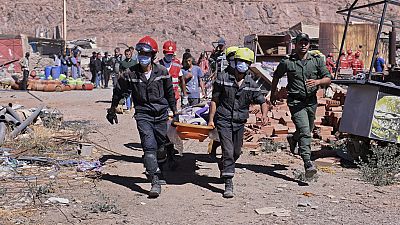

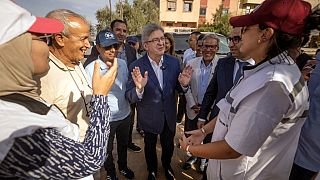
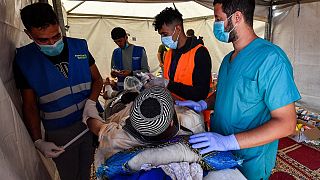
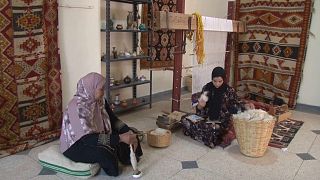

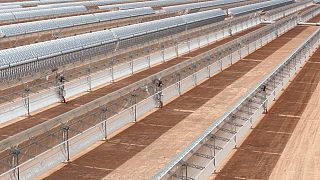
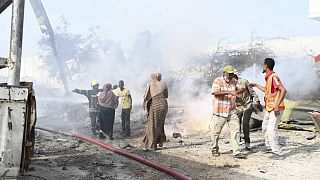
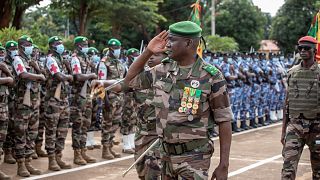
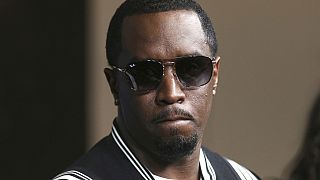
Go to video
In Kenya, 90% of packaged food needs health warning label under new rules
00:52
Nigeria’s Peter Obi to contest 2027 election, opposition coalition in jeopardy
Go to video
Cameroon’s Tourism Minister joins presidential race as Biya’s silence fuels uncertainty
Go to video
INTERPOL seizes $65M in fake drugs, arrests 769 in largest-ever global crackdown
Go to video
Uganda's Museveni breaks African silence on Israel-Iran war
Go to video
Over 40 killed in attack on Sudanese hospital: WHO Chief condemns “Appalling” strike